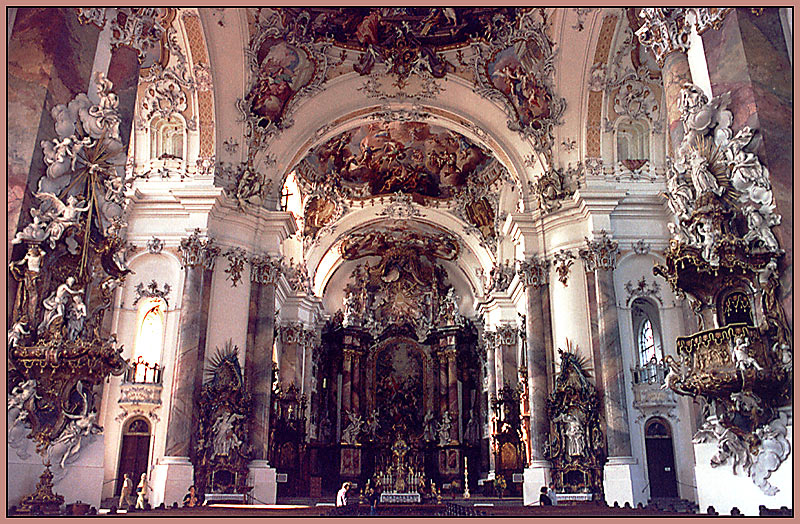My favorite is Victorian Gothic and other forms of neo-Gothic because it could range from fairly simple and understated to out of control and amazingly ornate - yet always promote a prayerful environment because of the verticality and richness of it. I recently visited a small church with an amazing interior - the building dated from the 1880s, but was gutted by fire in the 1920’s. The interior was filled with elaborately carved Gothic woodwork (a high altar and two side altars, pews, chairs, a lovely crucifix and stations of the cross, etc). The space was very intimate and beautiful. However, I also love neoclassical, baroque, art deco, and a handful modern styles.
Also, I think the church I regularly attend is unusual in a good way. The church was built in the mid 1960’s, so one expects to find a typically bland suburban church, especially if you judge it from the exterior. Yet, when I first walked in I was struck by the beautiful old Gothic high altar, stations of the cross, and Crucifix. I figured these things must have pre-dated the church, and upon finding the parish website I found that they indeed did. The church had moved from a 1906 building and had re-used the altar (now set behind a stone freestanding altar), statues, crucifix, stations, pews, and confessional from the old church (the pews fell apart by the 90’s and had been replaced, and the confessional was moved to a closet at the same time and replaced by a reconcilliation room). This uncharacteristic-for-the-1960’s preservation of old religious art had always puzzled me. Then I talked to someone who works at the church, and she told me that the church building was designed to be a gymnasium for the attached gradeschool. It was only meant to be a temporary home until a new church was built - something that never happened. Then everything suddenly made sense - they kept the old stuff because it would have been silly to spend a fortune decorating a temporary church. I suspect that most of those things would have been replaced as soon as a new church was built.
I think it is sort of funny how people here compain about how their churches were designed to look like gymnasiums, yet my church was designed to be a gym and actually looks like a Catholic church.


